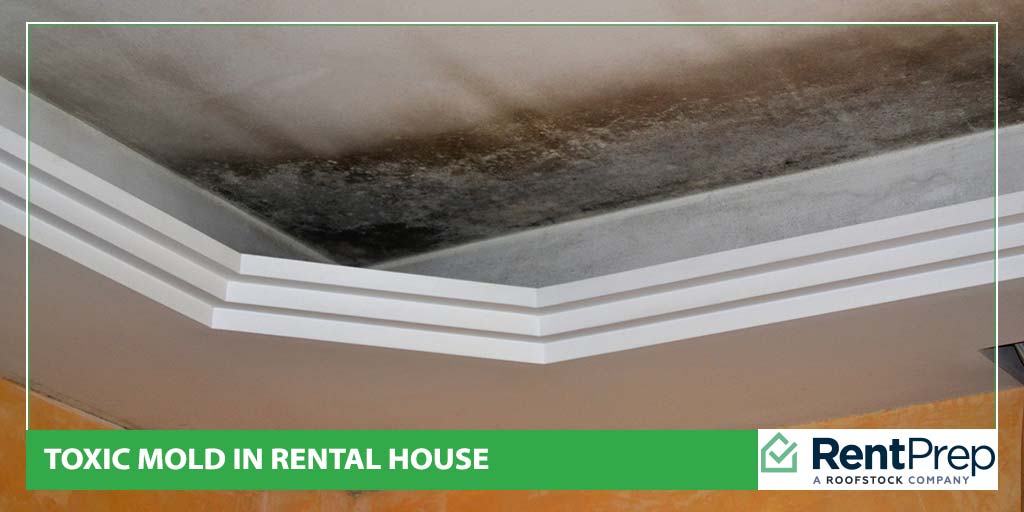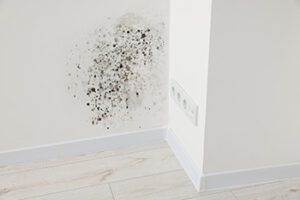
A landlord is responsible for providing a habitable rental property for tenants, which includes being free from any environmental hazards, including toxic mold. Toxic mold can trigger terrible health problems in residents and potentially cost a landlord millions of dollars in lawsuits from affected tenants. It’s extremely important that landlords know as much as they can about toxic mold, from spotting it to notifying tenants about what it takes to clean it up.
What Is Mold?
Mold is a fungus that is neither plant nor animal, which grows on food, plants, animals and nearly any surface. Mold comes in a range of colors, from black to green to white. It can be helpful to humans in creating medicine—think of penicillin, for example. Mold also helps decompose dead plants and animals as a key part of any ecosystem. It thrives in dark and damp climates and locations. However, mold can also pose serious health risks to humans and animals.
Mold reproduces by creating spores, which are released into the air. These mold spores are quite common and people breathe them in low numbers regularly at home, at school and in the workplace. A high concentration of certain mold spores in the air can affect the health of organisms that breathe them in. Not all mold is harmful, remember, but the mold that is dangerous to humans has triggered a range of laws and regulations regarding its presence and removal.
Exposure to Mold

Mold can grow in any area where it has access to moisture and is often seen on food, walls, fabric, newspapers, cardboard, and wood. Mold is more common in humid climates, such as the Southeastern states, but it is possible for mold to grow in dry climates as well.
In a home or rental property, mold can grow behind ceilings or walls, under sinks, on windowsills and anywhere that is damp and dark. Often, mold grows when there are plumbing issues or leaking roofs, and can quickly grow out of site and not be noticed until it is too late.
Mold and Human Health
With too much exposure to toxic mold, humans can suffer a range of negative health effects. Respiratory problems, allergic reactions, neurological problems and more are all results of prolonged exposure. Children and the elderly are particularly at risk for health-related problems.
Here is a list of symptoms that could mean someone has been exposed to toxic mold:
- Cough
- Throat irritation
- Sneezing
- Wheezing and chest tightness
- Blurred vision
- Dizziness or nausea
- Itchy, watery eyes
- Runny nose
Asthma, sinus infections, allergic reactions, fungal infections and mycotoxin toxicity are conditions and diseases that are common in those who have been exposed to toxic mold spores. Ill health can range from short-term illnesses to long-term, permanent effects.
Landlords can be liable for failing to provide a habitable residence, and toxic mold growth certainly falls under this definition. Because landlords are the owners of rental properties where people reside, they are therefore responsible for complying with state and local health standards.
Mold and the Law

Slowly, government officials and medical experts are realizing the serious health issues that exposure to toxic mold can cause. To date, there are no federal laws on mold, either for acceptable levels of exposure or building/rental standards.
Several states, including Texas and California, have laws set up to regulate mold testing standards.
California’s laws are leading the way, with the State of California’s Department of Public Health setting up the nation’s first indoor air quality program, which includes mold regulations. Some cities have also set up laws to regulate mold levels, most notably San Francisco, where property owners are responsible for keeping a property free of nuisances like vermin, and mold.
Tenants in all states are able to sue landlords for health problems, property damage, or other loss because of toxic mold, with many people receiving large settlements as compensation. Because toxic mold goes against the implied warranty of habitability laws set up by each state, landlords can be responsible for not keeping the rental property free of hazardous conditions like mold.
For more information on mold and the legalities behind it being in a rental house, check out this video:
Identifying Mold
Mold is easy to identify with the eyes and your nose. You will see black, gray, or greenish mold in moist, dark corners, such as under sinks, in the corners of bathrooms, on the wall where water is leaking from inside, or even on the ceiling when water is leaking slowly from above. Most people can also identify mold by its musty, dank odor. While some mold you may observe, such as in the grout of the shower or in the corner of a window, is not harmful to humans, other kinds are toxic.
One of the most toxic kinds of mold, black mold (Stachybotrys atra) is fairly easy to identify. It is greenish-black and looks slimy or wet. It has a distinct smell that is very musty. The mycotoxins in the black mold are particularly toxic and when inhaled, they can become very serious for children, the elderly and pets. If it is allowed to grow without notice, the results can be deadly.
There are do-it-yourself mold test kits available that will provide basic results, but if landlords want the most accurate results, they must call in a certified mold tester. The professional will cost more than the kit, but they will have more certainty on the results as to whether toxic mold is on the rental property.
Most states have mold remediation services where licensed professionals can identify mold and clean it up to meet livable standards. Whether toxic or not, any mold found in a rental property should be removed. The issue just depends on whether it is something the landlord or a regular cleaning crew can do, or if it’s something that requires professional services.
When landlords discover mold in their rental property, they should document everything with photos or video, plus written descriptions of what they see. This is important for several reasons. First, it will help experts calculate the extent of contamination, plus it will help with a remediation plan on how to clean it up.
It may also come in handy if the tenant somehow caused the conditions that allowed the mold to grow. Then the photos and video will become evidence for landlords to collect the cost of repairs from the tenants.
Black Mold in Rental House
The number one way to reduce the risk of black mold in a rental house is to control the humidity and moisture in the rental property.
It’s important for landlords to do everything they can to keep moisture to a minimum. Of course, it is much better to prevent mold in the first place rather than deal with it once it becomes a full-blown problem.
Sources of humidity and moisture in a rental property often originate from these sources:
- Leaky roofs
- Leaky pipes, toilets and sinks
- Leaks around windows
- Fish tanks
- Damp basements
- Overuse of humidifiers
There are 3 things that landlords should stay on top of in order to keep control over humidity and therefore mold in their rental properties:
- Ensure that exhaust fans and windows in kitchens and bathrooms are working.
- Check plumbing regularly and fix sources of leaks.
- Install or provide tenants with dehumidifiers if the property is located in a humid climate.
It’s also a good idea to review mold-free habits with the tenant when it comes to keeping moisture under control in the rental. While this doesn’t need to be as formal as an addendum, landlords can have a conversation about the potential for mold.
Who Pays for Mold Removal?
No matter what, a landlord must remove the mold from a rental property and must bear the initial cost of the removal, especially if the mold was a result of something related to maintenance or lack of it. Because mold presents a health hazard or renders the home unlivable, it is the landlord’s responsibility to restore the property to a livable state.
If the mold occurred as a result of something the tenant did or did not do, the landlord can charge the tenant for the cost of the mold removal. The tenants may resist paying, so the landlord must document everything and show that the mold was a result of tenant action.
Following an immediate and thorough cleanup plan is essential for getting rid of the mold, stopping it from spreading and contaminating further, and showing your tenants that you are committed to acting quickly. The priority is to get the mold taken care of, then collect from the tenant, if it is the tenant’s fault.
Toxic mold is a serious and significant issue in rental properties and landlords should never wait to tackle it. Neglecting to clean it up can lead to a much greater loss of income in the long run than sparring with a tenant on cost. There’s plenty of time to recoup costs down the road while the landlord gets the property back into livable shape.
Is mold an issue in your part of the country? What steps have you taken to reduce the risk of toxic mold in your rental property? Please share this article and let us know your thoughts in the comments section below.

